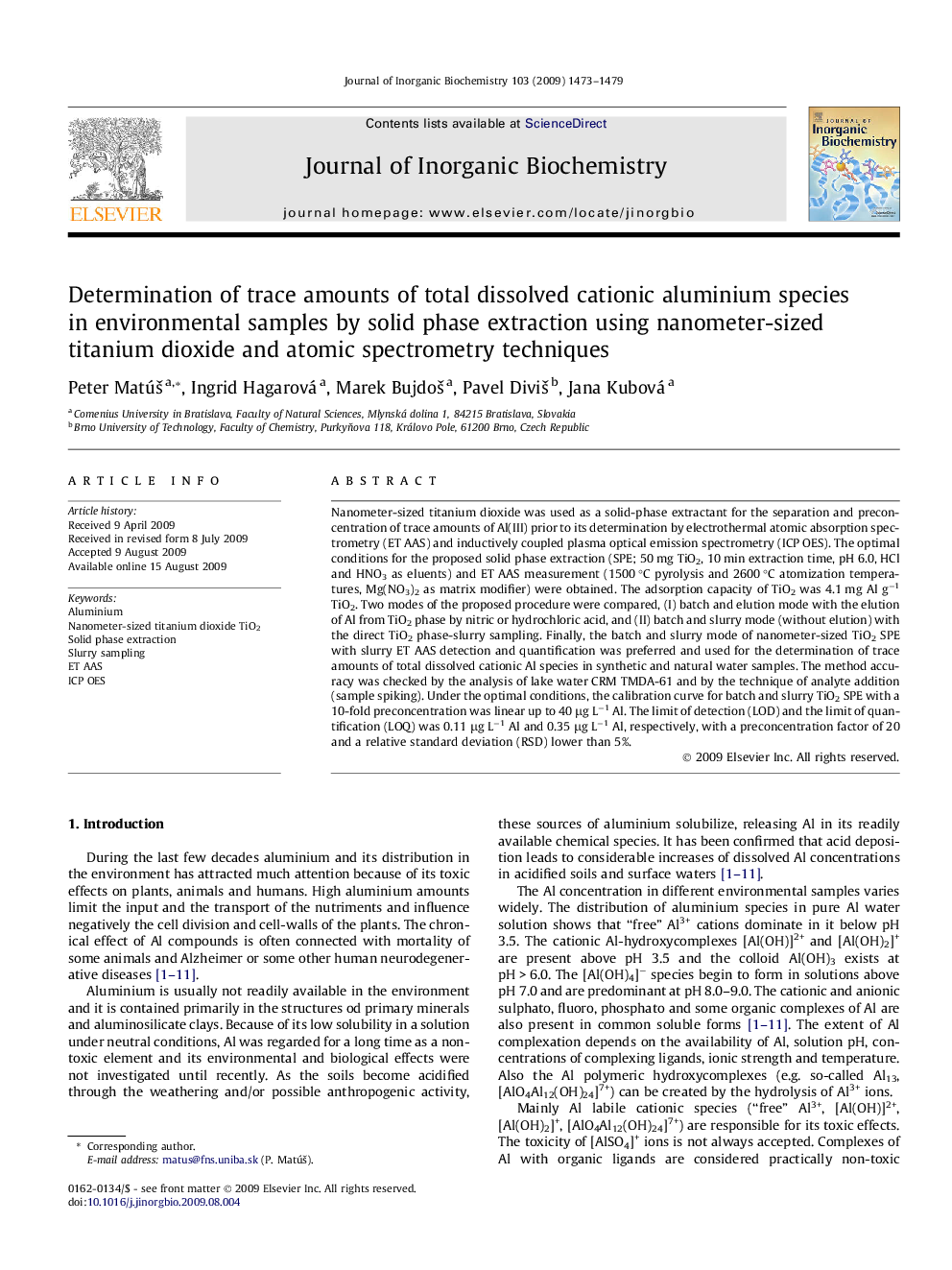| Article ID | Journal | Published Year | Pages | File Type |
|---|---|---|---|---|
| 1318003 | Journal of Inorganic Biochemistry | 2009 | 7 Pages |
Nanometer-sized titanium dioxide was used as a solid-phase extractant for the separation and preconcentration of trace amounts of Al(III) prior to its determination by electrothermal atomic absorption spectrometry (ET AAS) and inductively coupled plasma optical emission spectrometry (ICP OES). The optimal conditions for the proposed solid phase extraction (SPE; 50 mg TiO2, 10 min extraction time, pH 6.0, HCl and HNO3 as eluents) and ET AAS measurement (1500 °C pyrolysis and 2600 °C atomization temperatures, Mg(NO3)2 as matrix modifier) were obtained. The adsorption capacity of TiO2 was 4.1 mg Al g−1 TiO2. Two modes of the proposed procedure were compared, (I) batch and elution mode with the elution of Al from TiO2 phase by nitric or hydrochloric acid, and (II) batch and slurry mode (without elution) with the direct TiO2 phase-slurry sampling. Finally, the batch and slurry mode of nanometer-sized TiO2 SPE with slurry ET AAS detection and quantification was preferred and used for the determination of trace amounts of total dissolved cationic Al species in synthetic and natural water samples. The method accuracy was checked by the analysis of lake water CRM TMDA-61 and by the technique of analyte addition (sample spiking). Under the optimal conditions, the calibration curve for batch and slurry TiO2 SPE with a 10-fold preconcentration was linear up to 40 μg L−1 Al. The limit of detection (LOD) and the limit of quantification (LOQ) was 0.11 μg L−1 Al and 0.35 μg L−1 Al, respectively, with a preconcentration factor of 20 and a relative standard deviation (RSD) lower than 5%.
